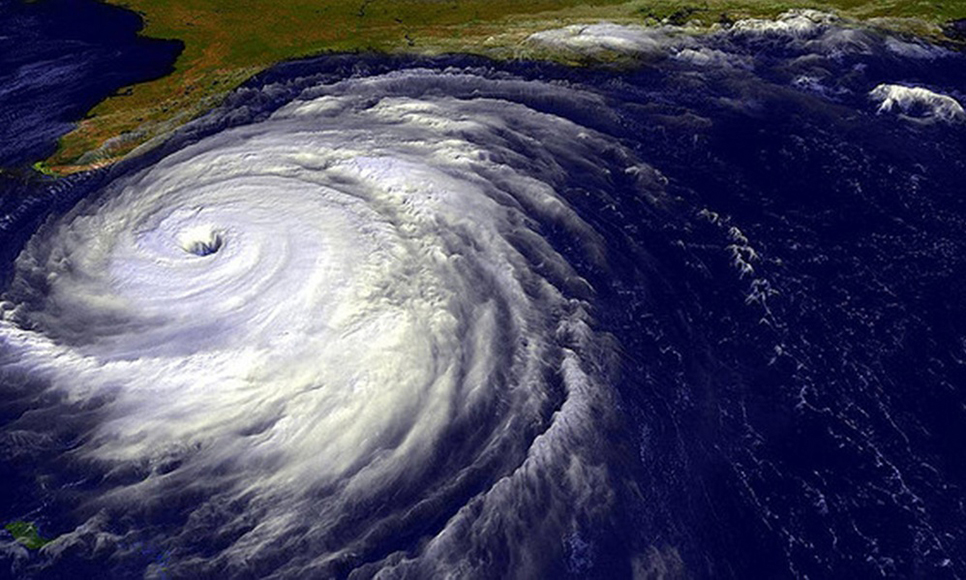Cyclone Hudhud hit the east coast of India on 12 October leaving behind it, a trail of destruction and despair. In the wake of this tropical storm, Kindle looks at the five deadliest tropical storms in the history of the world…
THE GREAT BHOLA CYCLONE, Bangladesh: Bangladesh as a nation was born in the wake of what can be called the deadliest tropical cyclone this world has ever seen. The year preceding its independence to Pakistan, East Pakistan (now Bangladesh) and India’s West Bengal, saw a Category 3 Hurricane hit its shores on 12 November 1970.
Even though it made its landfall as a Category 3 storm, it proved to be one of the worst natural disasters due to the density of population in one of the most fertile delta regions of the world. The fact that a major part of the country is barely above sea level increased the severity of the flooding.
The cyclone formed over the Bay of Bengal on 8 November and travelled north, and by 11 November, it was a well-defined cyclone with wind speeds of 137-145km/hr. It intensified overnight and hit the coasts on 12 November with average wind speeds of more than 220km/hr and over a 20 ft storm surge.
The storm surge wiped out complete villages and 85% of the homes in the affected lower lying coastal areas were destroyed or damaged. The death toll caused by Cyclone Bhola ranges between 300,000 to 500,000 people making it one of the deadliest natural disasters in recent times.
HOOGHLY RIVER CYCLONE, India and Bangladesh: The Hooghly River Cyclone or the Calcutta Cyclone as it is also called, caused widespread damage to the low-lying areas of West Bengal and Bangladesh in 1737.
October 11, 1737 saw a large cyclone making its landfall in the Ganges river delta that caused a storm surge of 30-40 ft. There was torrential rain of over 380mm in just a period of 6 hours. The damage done due to the cyclone was immense, especially in Calcutta where a majority of the structures were destroyed or damaged. Records suggest that more than 20,000 ships, barques, canoes, boats, sloops etc. were cast away and 300,000 to 500,000 people were killed. 8 out of the 9 English ships in the Ganges were reportedly lost, and so were 3 out of the 4 Dutch ships. Not just people but also there was large-scale destruction of animal life due to the cyclone.
HAIPHONG TYPHOON, Vietnam: The Haiphong Typhoon, which hit the Gulf of Tonkin on 8 October 1881, was the third deadliest tropical cyclone ever recorded.
The storm developed sometime around end-September east of the Philippines, and hit the coastal areas of Vietnam in early October destroying everything in its wake. The port-town of Haiphong, which is located roughly 16-kms inland from the Gulf of Tonkin on a branch of the Red river, was swept away entirely and there was widespread destruction in the surrounding low-lying delta region.
Around 300,00 people lost their lives as the storm surge flooded the low-lying regions. There was massive destruction not just to lives but also to the properties and the shipping industry.
GREAT BACKERGANJ CYCLONE: Bangladesh: The Bengal Cyclone of 1876 or the Great Backerganj Cyclone as it was also known as, hit the coast of Backerganj near the Meghna estuary in Barisal, Bangladesh on 31 October 1876.
The cyclone which initially formed over the South East Bay of Bengal intensified over a couple of days into a severe cyclonic storm and hit the coast of Bangladesh on 31 October. It had a wind speed of around 220 km/hr and reports suggest that the highest storm surge from a Bay of Bengal cyclone, which is reputed to be 44.6 ft, can be attributed to the this cyclone.
The intense storm surge caused deadly destruction of life and property. Estimates suggest that more than 200,000 people lost their lives either during the cyclone or due to the resultant famine and epidemics that were caused by the Great Backerganj Cyclone.
SUPER TYPHOON NINA: China: The destruction of the Super Typhoon Nina of August 1975 was unparalleled not just because of the winds and the storm surge but the catastrophic floods that it triggered.
On 29 July 1975, a tropical disturbance arose from a trough line in the Philippine Sea. Much of the typhoon’s strength was lost as it crossed Taiwan’s central mountain range and had weakened to a tropical storm by the time it struck near Jinjiang Fujian, China on 3 August. The storm bought heavy rainfall – 1,060mm in 24 hours, which is generally the amount of rainfall central China receives in a year. This resulted in the collapse of the Banquio and Shimantan Dams and 60 other dams causing unprecedented flooding and destruction downstream.
The floods submerged thousands of square kilometers of land in around 29 counties of the Henan province and the reported number of fatalities was pegged at 229,000.


